Washington state is brimming with wildlife. Bears lumber through the mountains, eagles soar through the skies, and spiders crawl along the ground. The state is also bursting with assorted plant life. However, not all the plants in Washington are safe to touch. In fact, we’re going to show you 10 dangerous plants found in Washington state that you’ll want to avoid touching at all costs!

1. Western Water Hemlock
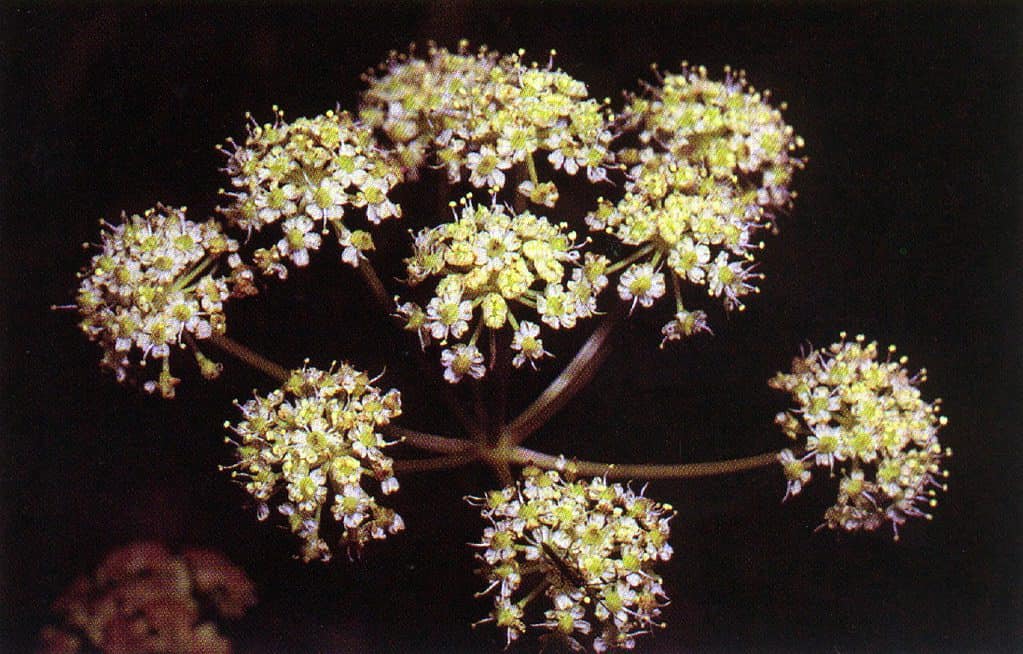
The western water hemlock is one of the most poisonous plants on the North American continent.
©Robert H. Mohlenbrock / Public Domain – License
The western water hemlock (Cicuta douglasii) is a large, poisonous plant that is closely related to carrots. These plants are found throughout the western coast of North America. Specifically, the plant is found in meadows, marshes, and other wetlands.
The reason people should avoid this plant is that it is incredibly toxic. This plant has cicutoxin, a toxin that impacts the nervous system. Once a human or animal eats too much of the plant, severe symptoms begin to appear. These include convulsions, rapid breathing, coma, and even death.
2. Giant Hogweed, Incredibly Dangerous Plants Found in Washington State
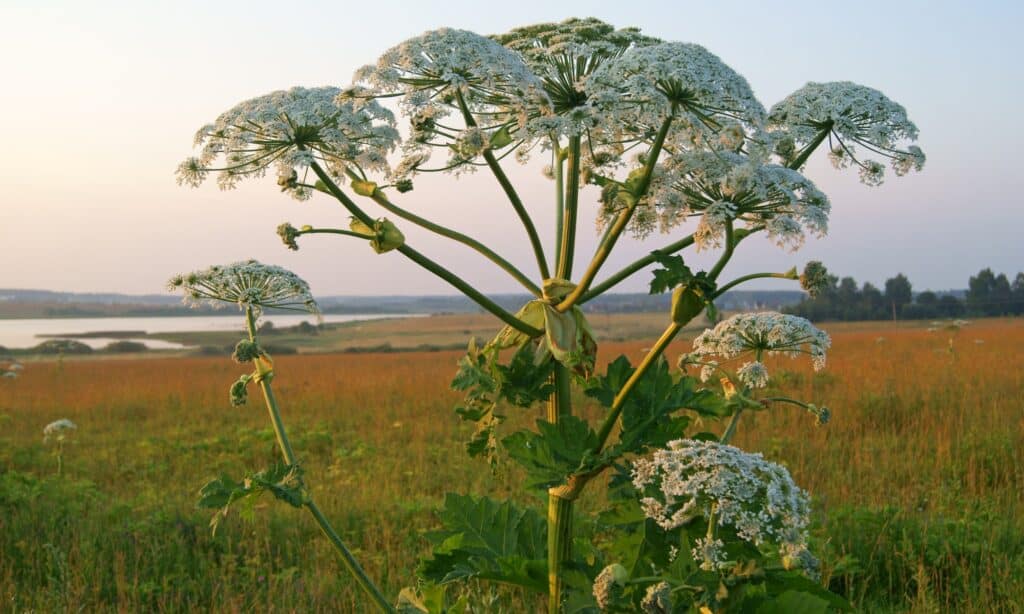
The giant hogweed plant can cause burns and blindness.
©iStock.com/hapelena
The giant hogweed (Heracleum mantegazzianum) is a noxious, dangerous plant that can have significant impacts on humans. For the most part, this plant is only found throughout the western part of Washington state. The plant can grow as tall as 15 to 20 feet!
Unfortunately, this plant grows in a variety of habitats including near rivers and streams but also along roadsides and potentially in residential areas if it’s left alone. The sap from this plant can cause phytophotodermatitis. That makes skin vulnerable to sunlight, leaving horrible burns and blisters if a person is out in the sun.
3. Poison Hemlock
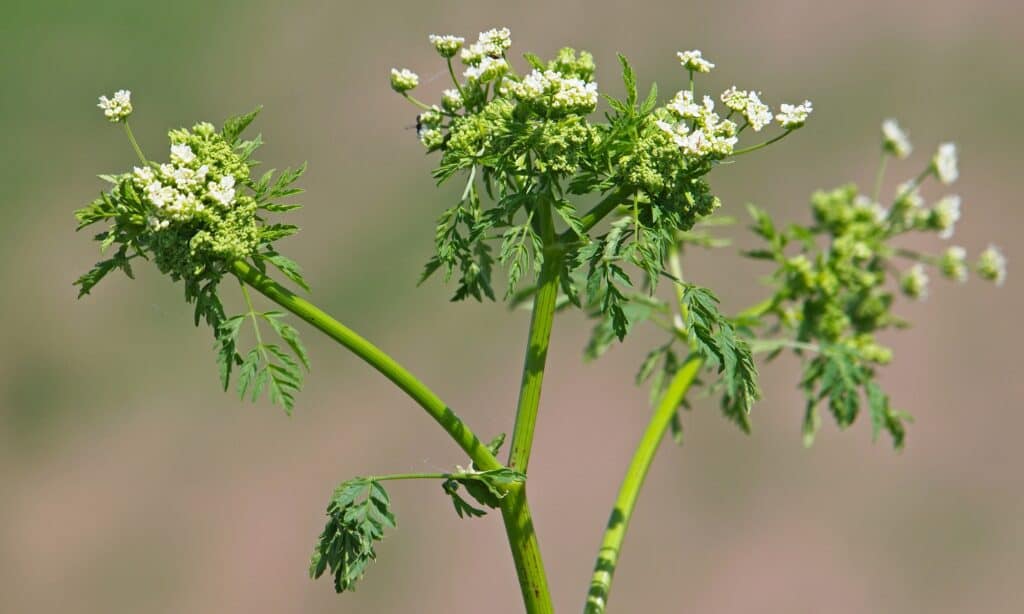
Poison hemlock thrives near pastures and rivers.
©iStock.com/emilio100
The poison hemlock plant (Conium maculatum) is found throughout Washington state. Like the western water hemlock, this plant prefers moist areas to grow. You’ll find them in farmlands, wetlands, urban areas, and many other places.
Poison hemlock can grow between 6 and 8 feet high, and it’s known for the hollow, purple-streaked stems on the plant. The sap of this plant is poisonous. People and animals that consume even small amounts of this plant can die. The poison from this plant can also seep through the skin. Symptoms of poison hemlock poisoning include confusion, weakness, drowsiness, skin irritation numbness, vomiting, and more.
4. Stinging Nettle

Stinging nettles have stinging hairs on leaves and stems which can cause pain and skin irritation upon contact.
©iStock.com/Dmitri Zelenevski
A stinging nettle (Urtica dioica) won’t poison a person. However, they are dangerous plants found in Washington that you should not touch. Stinging nettles are found throughout Washington in various locations. Their habitats include mountain slopes, forests, and other areas with moist soil and shade.
The thing that makes this plant dangerous is its stinging hairs on the leaves and stems. These stinging hairs introduce a mild chemical when they puncture a person’s skin. A person that touches this plant will be met with immediate pain and raised bumps on their skin. While short-lived, the pain can be uncomfortable if spread across a large portion of exposed skin.
5. Common Cow Parsnip
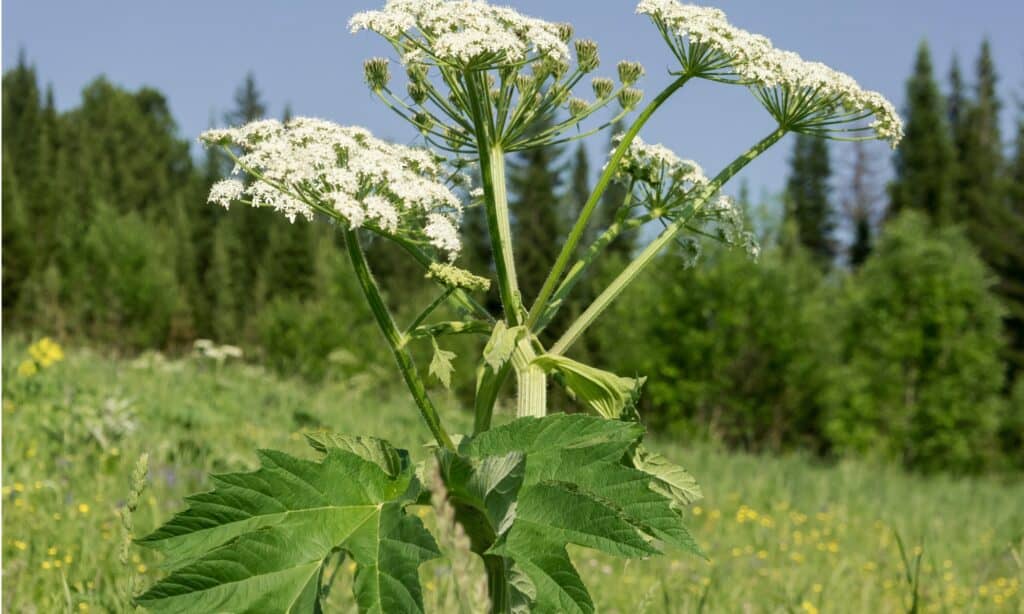
Cow parsnip thrives in sunny locations.
©iStock.com/Svetlana Popova
The common cow parsnip (Heracleum maximum) doesn’t sound like it is very dangerous. However, the plant is similar to giant hogweed in that its sap contains phototoxic chemicals. These chemicals are activated by ultraviolet rays in sunlight. A person that has the sap on them and is exposed to light will get a painful, itchy burn that takes a long time to heal.
This plant is found throughout the state. The plant’s habitat includes wetlands, marshes, the banks of rivers and streams, and more. The plant has a flat umbrel like other members of its family, and it can get very tall, measuring between 3 and 10 feet.
6. Poison Oak

Touching poison oak results in oils spreading to a person, causing blisters.
©ShutterstockProfessional/Shutterstock.com
Poison oak (Toxicodendron diversilobium) is another plant that no person should touch without protection. This plant is found throughout the western half of Washington state only. Poison oak commonly grows in places like forests, flood plains, and even along shorelines.
All parts of the plant have poisonous oils. If a person comes in contact with the plant, they may experience swelling, a painful rash, itching, and weeping blisters that last for hours or days.
7. Climbing Nightshade
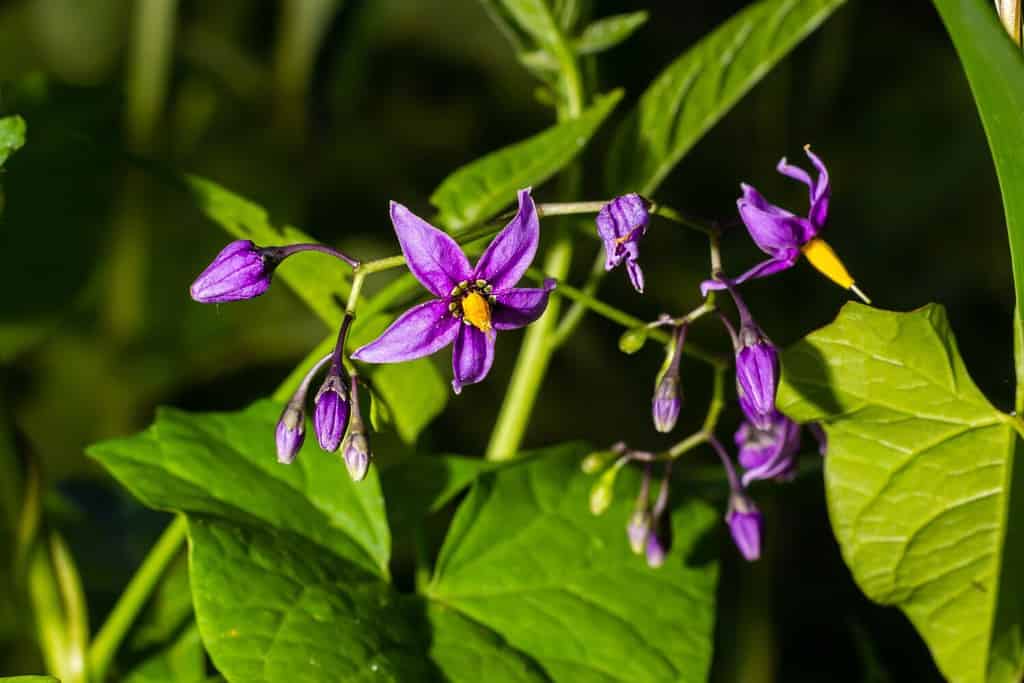
Nightshade goes by many different names.
©olko1975/Shutterstock.com
Climbing nightshade (Solanum dulcamara) also goes by the name bittersweet along with many others. This is one of the most dangerous plants in Washington state when considering its poisonous nature. The plant can inflict a rash and blisters on people. However, the plant’s true danger stems from its toxicity.
Ingesting nightshade can cause fatal poisoning in some cases. For the most part, this plant is found in forests, wetlands, and a variety of other places where it can climb and grow.
8. Wild Carrot

The wild carrot plant has edible roots.
©iStock.com/RuudMorijn
Wild carrots (Daucus carota) may not seem like a threat when one hears their name. However, this species is not the same as the one that humans consume. The wild carrot plant may look similar to a poison hemlock with its purple streaks or spots on its stems, umbrels, and height. That should be a good warning to stay away from this plant. Like others on this list, wild carrot sap can cause phototoxicity leading to blisters, burns, itching, and even blindness. Some plants can cause death when eaten.
The wild carrot plant grows throughout the state. Moreover, its habitat is greatly varied. The plant can grow just as easily on the side of the road as it can in forests.
9. Poison Ivy, a Mildly Dangerous Plant Found in Washington State
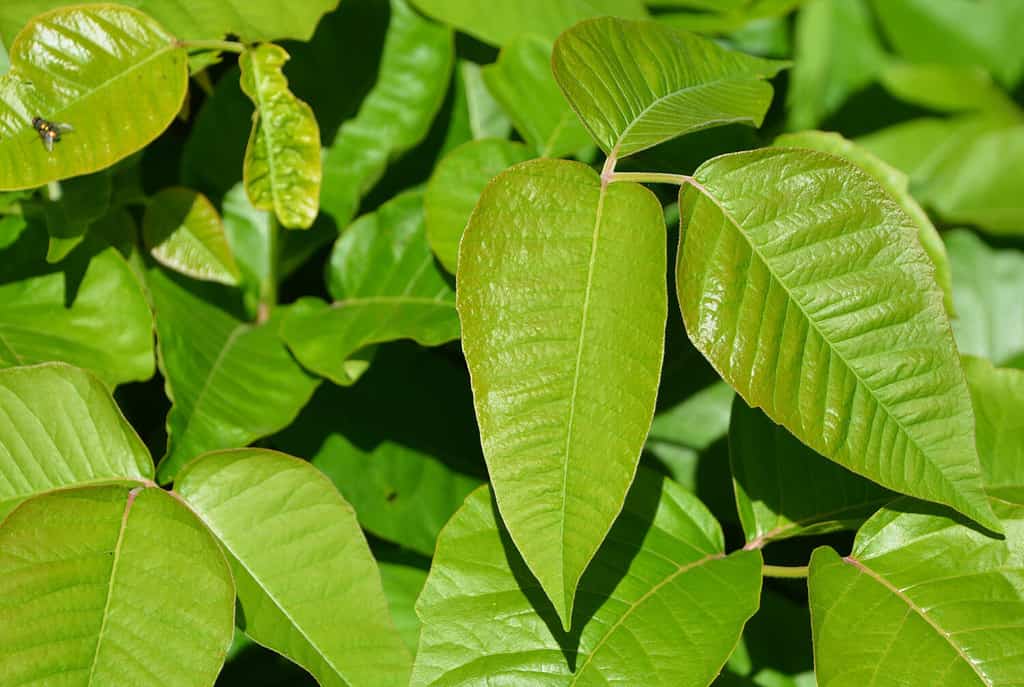
A poison ivy plant looks innocuous enough, but it can cause serious rashes.
©meunierd/Shutterstock.com
Poison ivy (Toxicodendron radicans) is not as much of a threat as poison oak. Also, this plant does not overlap its range with poison oak that much. Instead, poison ivy is more common in the eastern half of the state. The plant can survive in low-elevation areas, especially around forests.
The oils from the plant often cause a rash, swelling, and itching that can persist for several days. Some reactions can be very severe.
10. Wild Parsnip

Wild parsnip has a phototoxic sap that can make people’s skin blister and break out in a rash when exposed to sunlight.
©iStock.com/RuudMorijn
Wild parsnip (Pastinaca sativa) has a phototoxic sap that can make people’s skin blister and break out in a rash when exposed to sunlight. The sap is present in all parts of the plant, making it dangerous to handle. The plant can grow throughout Washington state, but it tends to grow in drier soil. However, this plant is not as dangerous as giant hogweed.
There are many dangerous plants found in Washington state that you should never touch. Some of them cause a reaction on the skin, and others are best left alone because of their potential to poison a person or animal. Either way, it’s best not to handle or eat a plant if you do not know what it is and what it can do.
Summary of 10 Dangerous Plants Found in Washington State
| Rank | Dangerous Plant |
|---|---|
| 1 | Western Water Hemlock |
| 2 | Giant Hogweed |
| 3 | Poison Hemlock |
| 4 | Stinging Nettle |
| 5 | Common Cow Parsnip |
| 6 | Poison Oak |
| 7 | Climbing Nightshade |
| 8 | Wild Carrot |
| 9 | Poison Ivy |
| 10 | Wild Parsnip |
The photo featured at the top of this post is © iStock.com/SailsKool
Thank you for reading! Have some feedback for us? Contact the AZ Animals editorial team.






